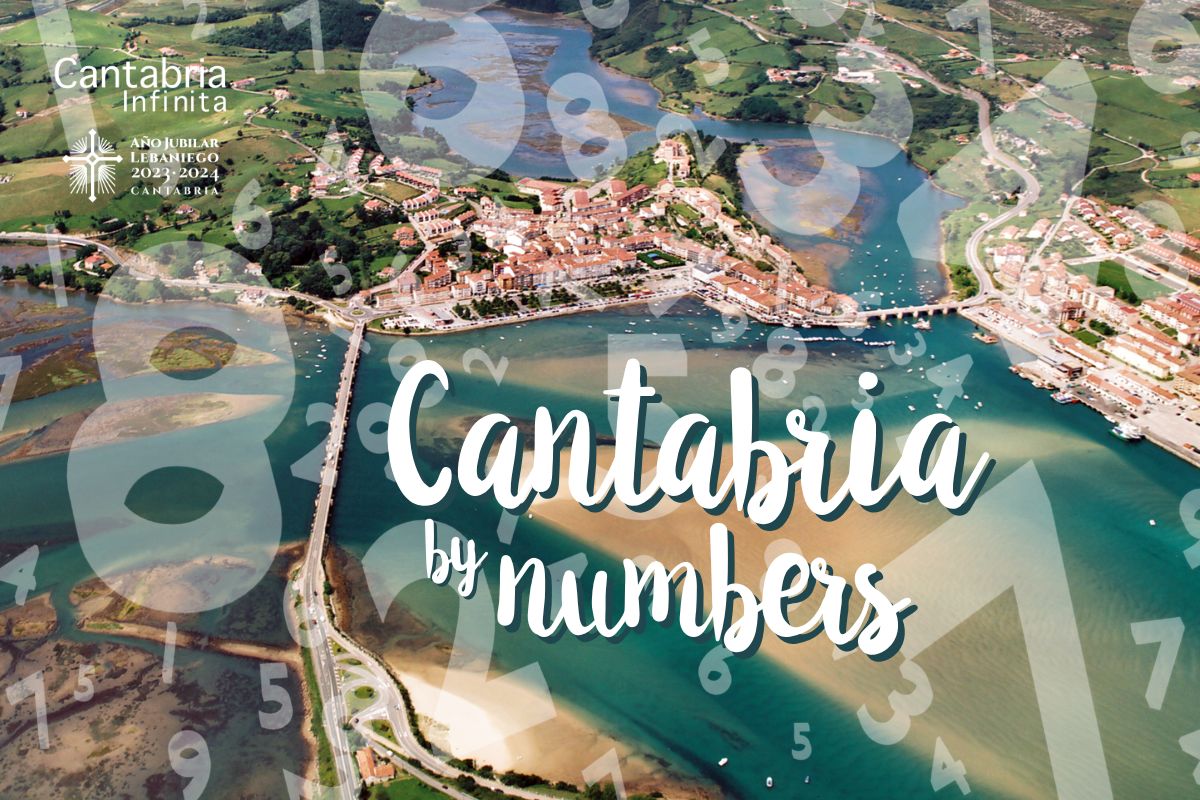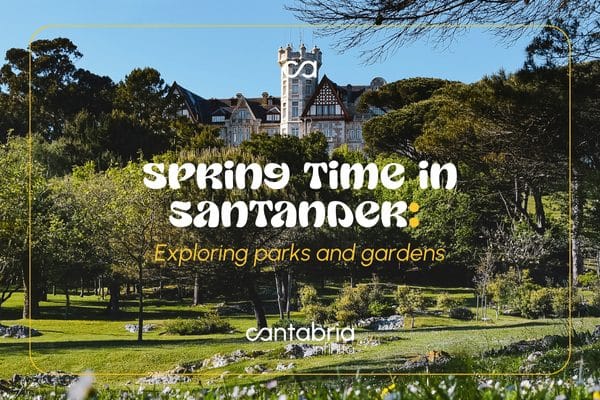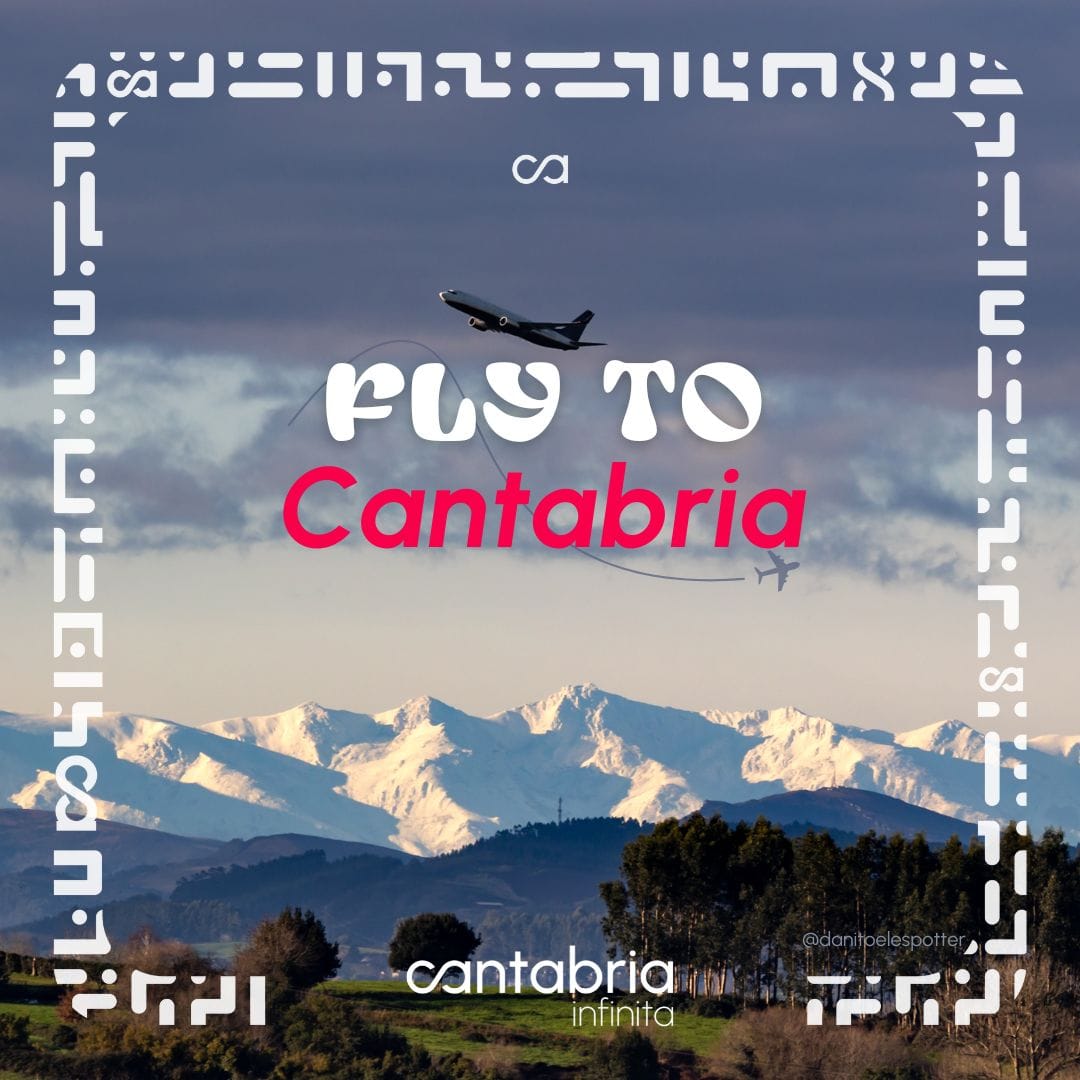Cantabria by numbers
Today let us explore Cantabria in another way, what do think about visiting Cantabria by numbers?
Today, let us explore Cantabria in another way, what do think about visiting Cantabria by numbers?
First let’s consider some basic information, which may even stating the obvious, but at the same time, necessary. The two statistics which identify our Cantabria Infinita are, on the one hand, its population, which is made up of a total of 585,222 people, and on the other, its territory, covering a total area of 5,321 km².
To begin with, we have to start with first number of all numbers: number «1». Cantabria is a single-province autonomous community, that is the first of our numbers one, although not the only one number 1 we have, there is the Picos de Europa National Park and born in this land was the all-time number 1 golf player, Severiano Ballesteros. Furthermore, in our Cantabria Infinita, there is a figure of local mythology known as the Ojáncano, a cyclops or an one-eyed giant, which has been part of the stories and legends passed down from generation to generation. This character, who lives in caves, is the embodiment of evil, cruelty and brutality.
But since we don’t want you to be left with a bad taste in your mouth, if anything with a tasty and unique flavour, let’s just say that Cantabria has an impressive gastronomic offer. Specifically in the region there are 6 Michelin-starred restaurants, 8 establishments with Bib Gourmand recognition, 11 Repsol suns and numerous Soletes Repsol which all stand out, for their culinary excellence.

Cantabria by numbers
Continuing with what makes us unique and exclusive, another of the figures that define us is 10, which corresponds to the caves in our territory, declared a World Heritage Site by UNESCO. These caves, headed by Altamira – known as the Sistine Chapel of cave paintings – are true archaeological treasures which takes us back to ancient times.
And if we’re going to talk about history and numbers, what do you think about travelling back to the fifteenth century, to the town of San Vicente de la Barquera? Since that century, it is famous La Maza Bridge which gives access to the town and is known for its large number of eyes over half a metre in length. Do you know how many eyes or arches it has? Our recommendation is that you visit this beautiful seaside town, cross the bridge and count the number of eyes while enjoying the unique view of the town with the Picos de Europa in the background. To ascertain the exact number here’s a clue. The bridge has more eyes than caves which have been declared UNESCO World Heritage Sites in Cantabria, more than the number of elephants born in the Cabárceno Nature Park, currently 24, which, by the way, is a clear testimony to the animal life conservation and protection efforts that are undertaken in this magical place which you really must visit; and less than the metres of falls drop height of the Asón waterfall.
Oops, please excuse us, we haven’t mentioned how long this stunning waterfall is: no more nor no less than 50 metres. As you can imagine, it is a spectacle that’s not to be missed. And while you are in the area, visit Santoña, partake of a great snack with local anchovies and are you up to descending the 763 steps that take you to the Caballo Lighthouse. Located at the foot of Mount Buciero, this route is a must for lovers of hiking and landscapes.

Cantabria by numers
And speaking of lengths and distances, does 72 kilometres ring a bell? Here’s a clue, we are celebrating the 74th Jubilee Year in Cantabria -sticking still with numbers. This event has its origin in the region of Liébana where there is a Monastery which safeguards the largest surviving piece of the True Cross, known as the Lignum Crucis. But let’s go back to our number, 72. Are you any wiser? Not yet? These are the kilometres which make up the Lebaniego Way. This pilgrimage route connects San Vicente de Barquera with the Monastery of Santo Toribio de Liébana in 3 stages. In other words, you should go to San Vicente to count the eyes of the La Maza Bridge and to visit the kilometre 0, the starting point of the Lebaniego Way.
As you can see, in the end everything is a question of numbers and it is these numbers which take us to the capital of Cantabria, Santander, where the well-known Magdalena Palace is located. It is one of the best known images of the city of Santander. This palace, which is currently owned by the municipality, has been a royal residence, home to the Menéndez Pelayo International University and has been used as a set for series tapings. Did you know that this iconic building has 365 windows? It is said that King Alfonso XIII had ordered the windows built so that he could look out of a different window every day of the year, as he was fascinated by the beauty of Santander (this doesn’t surprise us at all). This magnificent construction is a symbol of the elegance and charm of the city, and offers spectacular views of the Cantabrian Sea.
Ending this list with an exceedingly high number, specifically 6,200. This is the number of hectares covered by the Ebro Reservoir, a place of serene beauty and tranquillity in southern Cantabria, in the heart of the Campoo region. Its waters offer a breathtaking landscape and are the perfect setting to enjoy water activities and to relax surrounded by nature.
These are just some of the numbers and facts which make Cantabria a fascinating and unique destination. The region is brimming with history, exuberant nature, authentic flavours and magical locations waiting to be discovered by you and your family.
Did you enjoy this blog about Cantabria by numbers? We invite you to learn much more about Cantabria through this link to our blog






